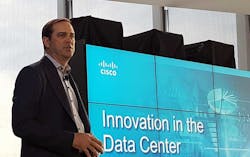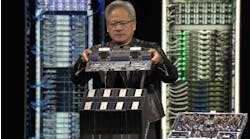Artificial intelligence will have a dramatic impact on network operations, according to data from Cisco Systems and its 2020 Global Networking Trends Report. Cisco’s analysts cite AI, along with other aspects of the evolving tech landscape, like cloud-native models and the Internet of Things (IoT), as causing dramatic changes in IT networking and operations.
Fortunately, some networks already use AI and automation to augment human decision-making and reduce the time spent on repetitive or manual tasks. Cisco recommends that IT professionals take a step-by-step approach to evolve each network domain to a controller-based model, building on AI and automation technologies in the process.
Making progress in this area may mean hiring more people, and could lead to new network-related job titles that help companies keep pace with trends.
The network commander, for example, oversees all controller-based efforts related to network automation and orchestration. Many of those likely concern AI. However, companies do not bear the full responsibility for this necessary evolution by hiring new team members to aid in the changes brought by AI and other emerging technologies.
Cisco suggests in its report that network strategists and practitioners should look for the career and learning pathways that equip them to lead the way in helping companies transform their networks for the future. AI is not the only technology to affect the network, but it’s among the leading forces.
AI Becoming Critical for Modern Networks
AI is becoming a critical element for today’s networks — primarily in operations, service delivery and network assurance. Cisco says AIOps is becoming a well-established category rather than a niche, providing better visibility into operations by utilizing machine learning and reducing the number of false alarms.
Cisco’s research suggests that the massive growth in data volumes and number of devices connected to networks make difficult for expertise from human operators alone to meet today’s requirements. However, AI offers a solution via intent-based networking.
An AI tool used in such a way can take network-sourced data to get details about the complexity of the network environment. It then proposes network changes in the moment to meet needs as they arise. Cisco clarified that machine learning and machine reasoning complement each other to show humans things like correlated insights and guided remediation.
Cisco says machine learning algorithms gain knowledge without receiving explicit programming. It can find patterns in training data and exploit them for improved results over time.
On the other hand, machine reasoning enables taking acquired knowledge and using it to examine a series of potential options to get the best possible outcome. Cisco describes machine reasoning as “well-suited for solving problems that require deep domain expertise.”
Blending IT operations and AI does not take people out of the picture. Cisco’s coverage discusses a “human and AI interlock” and advises that organizations progressively determine how far AI can go when making decisions or engaging in actions before humans step in to change course, monitor developments or approve an AI-driven recommendation.
Substantial Work Remains
Cisco’s researchers also polled network professionals to gauge their feelings about choosing AI for managing IT operations. The statistics showed some mixed results. One of the positive findings was that more than 50% deem AI as a priority network investment. Moreover, nearly three-quarters of network strategists (73%) anticipate investing in AI-enabled predictive insights or prescriptive remediation within the next two years.
Much smaller percentages of respondents have already taken steps to bring AI to their networks to assist with operations, though. For example, only 17% of those polled currently use AI for any network assurance. Cisco’s team weighed in to say that the availability of genuine AI-enabled tools for this purpose remains limited, and that could be the reason for the low percentage.
However, another finding was that just 17% of network strategists said the lack of maturity in AI technologies posed obstacles to their network modernization plans. One of the ways forward may be to find AI tools that offer free trials or let people pay for them by the month. Then, it could be easier for company decision-makers to get on board with using the new technologies.
One of the suggestions Cisco makes for companies that are ready to move forward with implementing this kind of technology is to use products that enable cloud-based AI learning. Using those may require enterprises to adjust their policies surrounding corporate data. Doing so, however, will pave the way for businesses to take advantage of what this category of AI tools offers.
The Essential Ingredient of Human Knowledge
AI is not a replacement for what humans contribute. As more network professionals investigate how IT operations and AI intersect, they will still need expert networking knowledge.
J.P. Vasseur is one of only 19 Cisco fellows from a pool of 30,000 engineers. He has 483 issued patents and stays at the forefront of internet technologies. After learning those things about him, you’ll likely agree it makes sense for him to give his thoughts in the Cisco report.
“By 2025, AI-enabled network assurance will fully automate several well-defined, specific tasks very well,” said Vasseur. “However, the majority of operational tasks that demand more flexible and contextual decision-making will still require the expertise and intervention of human operators.”
Cisco also differentiated expert networking knowledge as a premium skillset in its report. The people who possess it must verify that AI meets business and IT-related objectives as a company intended when investing in the technology. Seeing the full extent of the results may take time, but tracking metrics over time could help professionals see if things are moving in the right direction.
Moving From Reactive to Preventive Responses
Another likely change brought up in the Cisco report concerned how companies handle network problems. It brought up how many enterprises still handle them reactively. AI is a technology you could use to transition towards a more progressive approach. Imagine cutting down on the time spent troubleshooting issues or spotting new challenges.
This option is not outside of the realm of possibility, but it requires encouraging all the relevant parties at your company to collectively put effort into the change.
That means investing in skill growth, along with technological enhancements. Making progress will not happen overnight, but it is arguably well worth the effort and could help bring your company into the future.





